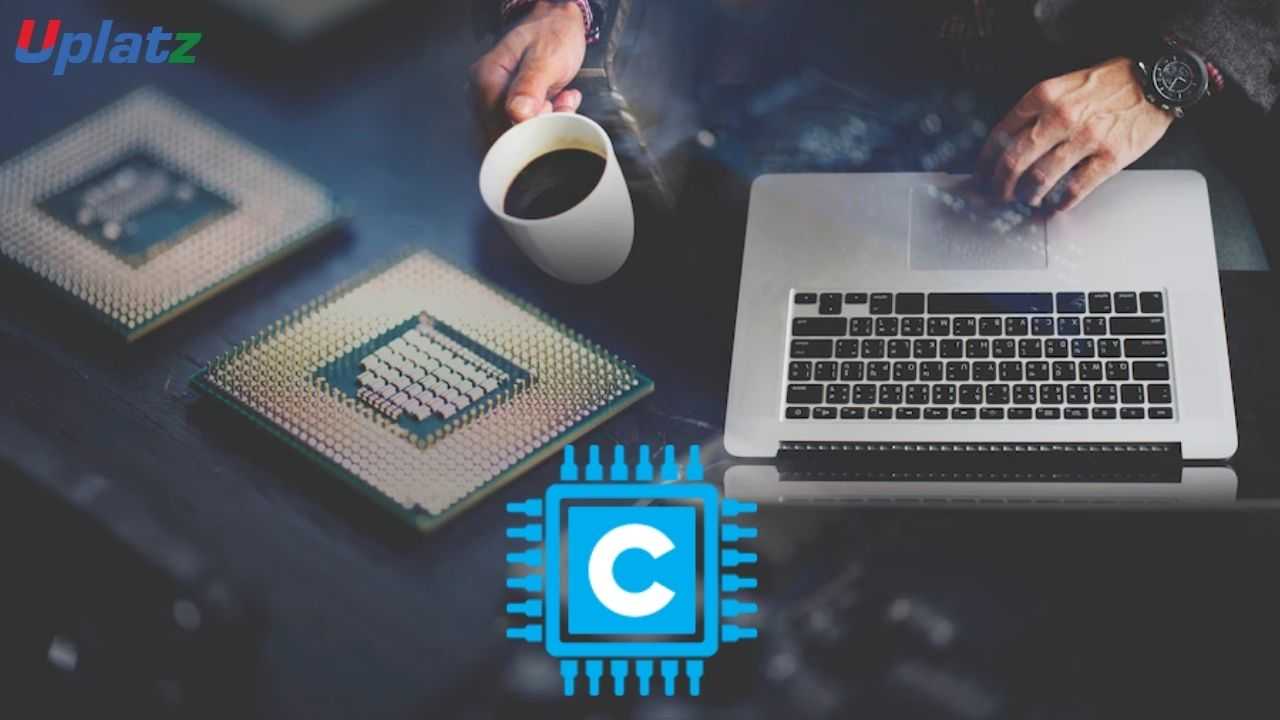Extended Reality (AR/VR/MR)
Unlock the Future with Extended Reality – Master AR, VR, and MR TechnologiesPreview Extended Reality (AR/VR/MR) course
Price Match Guarantee Full Lifetime Access Access on any Device Technical Support Secure Checkout Course Completion Certificate 91% Started a new career
BUY THIS COURSE (
91% Started a new career
BUY THIS COURSE (GBP 12 GBP 29 )-
 84% Got a pay increase and promotion
84% Got a pay increase and promotion
Students also bought -
-

- Assembly Language using ATMEL AVR Microcontroller
- 10 Hours
- GBP 12
- 200 Learners
-

- Internet of Things (IoT) Basics
- 10 Hours
- GBP 12
- 98 Learners
-

- C and Embedded C Programming
- 10 Hours
- GBP 12
- 157 Learners

Extended Reality (AR/VR/MR) – Online Course
Step into the future of human-computer interaction with our comprehensive, self-paced course on Extended Reality (XR)—a transformative suite of immersive technologies that includes Augmented Reality (AR), Virtual Reality (VR), and Mixed Reality (MR). This course is designed to provide you with a solid foundation and hands-on experience in the world of XR, empowering you to create innovative and interactive experiences across industries.
As the digital and physical worlds continue to converge, XR technologies are no longer just futuristic concepts—they are rapidly becoming mainstream tools in fields such as gaming, entertainment, education, healthcare, manufacturing, real estate, engineering, and more. XR is changing how people learn, work, collaborate, and engage with information. This course is your opportunity to join this exciting movement and master the skills needed to thrive in the immersive tech landscape.
Whether you are an aspiring developer, creative designer, engineer, or simply a technology enthusiast, this training program offers a structured pathway to understanding and building XR experiences. Through a blend of high-quality video lectures, hands-on projects, real-world scenarios, and expert guidance, you’ll learn to design, develop, and deploy XR applications using leading-edge platforms such as Unity, ARKit, ARCore, WebXR, and others.
The curriculum begins with the fundamentals of XR—exploring how AR overlays digital content onto the real world, how VR creates entirely simulated environments, and how MR merges real and virtual elements in real-time. You'll gain insight into the hardware ecosystem including headsets, motion controllers, sensors, and smartphones that support immersive experiences.
From there, you'll dive into XR development using industry-standard tools. You’ll learn to build spatial experiences, configure 3D environments, integrate gesture and voice interactions, and optimize performance across devices. You’ll also explore use cases such as AR in retail, VR in training simulations, MR in remote collaboration, and how companies are using XR to solve complex problems in innovative ways.
One of the distinguishing features of this course is its hands-on approach. You’ll complete guided projects that simulate real-world applications, giving you the confidence to build XR experiences from scratch. Whether you’re prototyping an AR app for interactive learning or designing a VR environment for architectural visualization, you’ll gain practical skills that extend beyond theory.
Upon successful completion of the course, you will receive a Course Completion Certificate—a valuable credential that validates your proficiency in XR development and showcases your commitment to innovation. This certificate can enhance your resume, support your career transition, or demonstrate your technical capabilities to clients and employers.
Who Should Enroll?
This course is ideal for:
- Software Developers looking to branch into XR application development
- Game Designers and 3D Artists interested in immersive media
- Educators and Instructional Designers integrating AR/VR into learning environments
- Product Managers and Engineers in tech, automotive, or healthcare sectors
- Tech Enthusiasts and Innovators exploring the potential of next-gen interfaces
No prior experience in XR is required, though basic familiarity with programming (especially C#) or 3D modeling is helpful.
How to Use This Course Effectively
To ensure a rewarding learning experience and successful mastery of XR concepts and tools, follow this structured approach to using the course:
1. Set Clear Learning Goals
Before you begin, define your purpose for taking the course. Are you aiming to create a prototype XR app? Planning to pivot your career into immersive tech? Seeking to add AR/VR features to an existing product? Having a clear outcome in mind will help guide your learning and keep you focused.
2. Follow the Course Structure Sequentially
While the course offers flexibility, it is structured in a progressive manner—from foundational knowledge to practical implementation. It’s recommended to complete the modules in the suggested order to build a comprehensive understanding and avoid missing critical concepts.
3. Build a Practice Environment
To truly grasp XR development, practical experience is essential. Set up your development environment using tools like Unity, Visual Studio, Android Studio, and device-specific SDKs. Make sure you have access to a compatible smartphone or headset to test your builds. If you don't have a headset, many exercises include mobile-based or emulator-supported alternatives.
4. Engage with Hands-On Projects
Throughout the course, you'll encounter mini-projects and capstone assignments. Treat these as real-world simulations. Don’t just follow along—experiment with additional features, break the code, and fix it. Customize your projects to suit your interests (e.g., AR for tourism, VR for storytelling), and document your process for future reference.
5. Take Notes and Create a Knowledge Base
Immersive tech involves many new terms, tools, and frameworks. Maintain digital notes or a project journal where you can capture important concepts, tool settings, troubleshooting steps, and helpful links. This will become a valuable reference as you progress and start working on independent XR projects.
6. Join the Community and Stay Updated
XR is a rapidly evolving field. Engage with other learners via online forums or course discussion boards. Participate in XR communities such as Unity Connect, Reddit’s r/VRdev, or AR/VR Slack groups. These platforms are excellent for networking, learning about new tools, and getting peer support.
7. Revisit Complex Topics
Don’t rush through modules. XR development can be technically and creatively demanding, especially when integrating input systems, optimizing 3D assets, or troubleshooting build errors. Rewatch lectures, revisit labs, and consult documentation whenever necessary.
8. Apply Your Knowledge to Real-World Use Cases
After completing the course modules, challenge yourself by developing a personal or portfolio-worthy XR project. Whether it's a museum AR tour, a virtual wellness space, or an educational MR simulation, applying what you've learned in a practical context is the best way to reinforce your knowledge.
9. Showcase Your Skills and Certificate
Add your course certificate to your LinkedIn profile, professional website, or resume. Share your XR projects and experiences on social media or GitHub to demonstrate your capabilities to potential employers, clients, or collaborators.
This Extended Reality (XR) course offers a complete, practical, and accessible pathway into one of the most exciting and impactful areas of modern technology. By the end of this program, you won’t just understand XR—you’ll be equipped to shape the future with it. Whether you're building engaging AR experiences, immersive VR environments, or sophisticated MR interfaces, this course is your launchpad into the world of immersive digital innovation.
Course/Topic 1 - Course access through Google Drive
-
Google Drive
-
Google Drive
By the end of this course, learners will be able to:
- Understand the Fundamentals of XR, including the differences between AR, VR, and MR, and their historical evolution.
- Explore Core Components of XR systems, such as hardware (headsets, controllers) and software (Unity, Unreal Engine).
- Develop VR Experiences by creating immersive environments, interactions, and user interfaces.
- Build AR Applications using tools like ARKit and ARCore to overlay digital content onto the real world.
- Master Mixed Reality by combining VR and AR elements for spatial computing and advanced interactions.
- Apply XR Across Industries, including gaming, healthcare, education, and marketing.
- Address Ethical and Social Considerations, such as privacy, accessibility, and societal impacts of XR.
- Complete Hands-On Projects to showcase your skills in designing and developing XR experiences.
- Prepare for Certification and Career Opportunities in the rapidly growing XR industry.
Module 1: Introduction to Extended Reality (XR)
- Understanding XR: Definitions of AR, VR, and MR
- Evolution and milestones in XR technology
- Key hardware and software components in XR systems
- Industry applications and real-world use cases
Module 2: Virtual Reality (VR) – Foundations & Development
- Core principles: Immersion, presence, and interactivity
- VR hardware breakdown: Headsets, controllers, and tracking systems
- Introduction to VR development platforms (Unity, Unreal Engine)
- Hands-on: Building a simple VR environment with basic interactions
Module 3: Augmented Reality (AR) – Concepts & Implementation
- How AR works: Marker-based vs. markerless AR
- AR hardware: Smartphones, glasses, and wearables
- Development tools: ARKit (iOS), ARCore (Android), and WebXR
- Practical exercise: Creating an AR app with object recognition
Module 4: Mixed Reality (MR) – Bridging Real & Virtual Worlds
- Understanding MR: Spatial computing and holographic interactions
- MR devices: Microsoft HoloLens, Magic Leap, and Meta Quest Pro
- Developing MR experiences: Hand tracking, spatial mapping, and UI design
- Case study: Enterprise applications of MR
Module 5: XR Development with Unity
- Setting up Unity for XR development
- Working with 3D assets, animations, and physics
- Scripting interactions in C# for XR experiences
- Project: Developing a cross-platform (VR/AR) demo
Module 6: Industry Applications of XR
- Gaming & Entertainment: Immersive storytelling and interactive media
- Healthcare: Surgical simulations, patient rehabilitation, and diagnostics
- Education & Training: Virtual labs, skill development, and remote learning
- Engineering & Design: Prototyping, 3D modeling, and collaborative workspaces
- Retail & Marketing: Virtual try-ons, AR advertising, and customer engagement
Module 7: Ethical, Social, and Future Trends in XR
- Privacy concerns and data security in XR
- Accessibility and inclusivity in immersive technologies
- The impact of XR on jobs, society, and human behavior
- Emerging trends: AI in XR, haptic feedback, and the metaverse
Assessments & Practical Work
✔ Quizzes – Test understanding of key concepts
✔ Hands-on Labs – Build small AR/VR/MR prototypes
✔ Final Project – Develop a functional XR application
✔ Case Study Analysis – Evaluate real-world XR implementations
Tools & Software Covered
- Unity 3D (Primary development platform)
- Unreal Engine (Optional for advanced VR)
- ARKit (Apple) & ARCore (Google) (Mobile AR development)
- Blender (Basic 3D modeling for XR)
Upon successfully completing the Extended Reality (AR/VR/MR) course, learners will receive a Course Completion Certificate from Uplatz, validating their expertise in XR technologies. This certification serves as a testament to your skills in designing and developing immersive experiences, making you stand out in the competitive job market.
For those aiming to further their credentials, this course provides a strong foundation to pursue official certifications from platforms like Unity Certified Professional or Apple ARKit Certification. The hands-on experience and comprehensive knowledge gained will prepare you to confidently tackle industry-recognized exams and advance your career in XR development.
Completing the Extended Reality (AR/VR/MR) course opens doors to exciting career opportunities in one of the fastest-growing tech fields. Industries such as gaming, healthcare, education, and engineering are actively seeking XR professionals.
Potential roles include:
- XR Developer
- AR/VR Software Engineer
- Mixed Reality Designer
- XR Content Creator
- Game Developer (XR Focus)
- XR Solutions Architect
- XR Trainer or Educator
Whether you're looking to break into the XR industry or enhance your current skill set, this course equips you with the practical knowledge and hands-on experience needed to succeed.
1. What are the key differences between AR, VR, and MR?
AR (Augmented Reality) overlays digital content onto the real world (e.g., Pokémon GO). VR (Virtual Reality) immerses users in a fully digital environment (e.g., Oculus Rift). MR (Mixed Reality) blends real and virtual worlds, allowing interaction with both (e.g., Microsoft HoloLens).
2. Explain the role of Unity in XR development.
Unity is a leading game engine used to create cross-platform XR applications. It provides tools for 3D rendering, physics, and scripting, simplifying the development of immersive experiences for AR, VR, and MR.
3. How does ARKit or ARCore enhance AR experiences on mobile devices?
ARKit (iOS) and ARCore (Android) enable advanced AR features like motion tracking, environmental understanding, and light estimation, allowing developers to create realistic and interactive AR apps for smartphones.
4. What hardware components are essential for a VR setup?
Key components include a VR headset (e.g., Oculus Quest), motion controllers, sensors for tracking, and a powerful computer or standalone device to run high-fidelity VR applications.
5. Describe a use case for MR in healthcare or education.
In healthcare, MR can assist surgeons with real-time 3D visualizations during procedures. In education, it enables interactive learning, such as virtual dissections or historical recreations.
6. How do you ensure user privacy and data security in XR applications?
Implement data encryption, anonymize user data, obtain explicit consent for data collection, and comply with regulations like GDPR to protect user privacy in XR apps.
7. What are the challenges of creating immersive VR environments?
Challenges include motion sickness due to latency, high hardware costs, achieving realistic interactions, and designing user interfaces that feel natural in a 3D space.
8. How can XR be used for training and simulation in industries?
XR enables risk-free training simulations, such as flight training for pilots, equipment operation for engineers, or emergency response drills for healthcare workers.
9. What ethical considerations should developers keep in mind when designing XR experiences?
Developers must address addiction risks, avoid manipulative design (e.g., excessive data collection), ensure accessibility, and consider the psychological impact of immersive environments.









